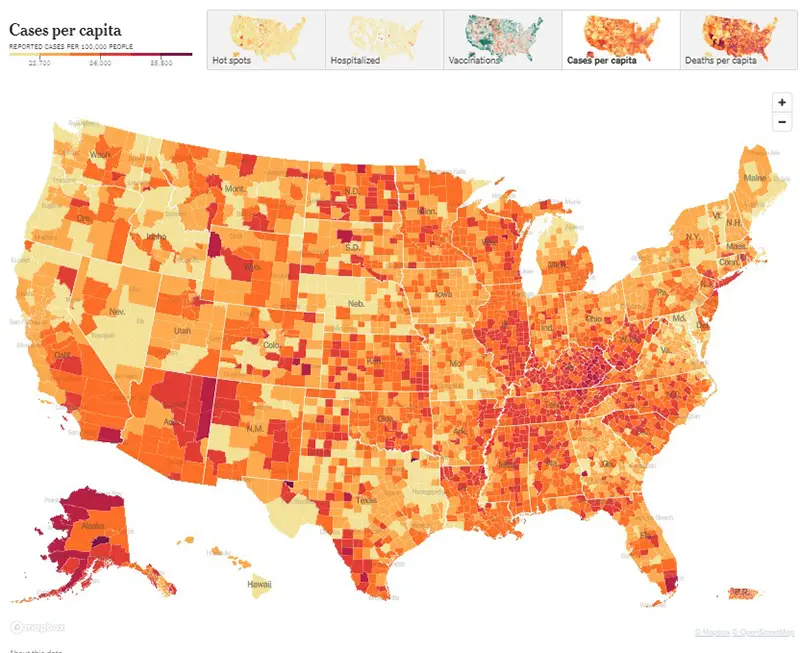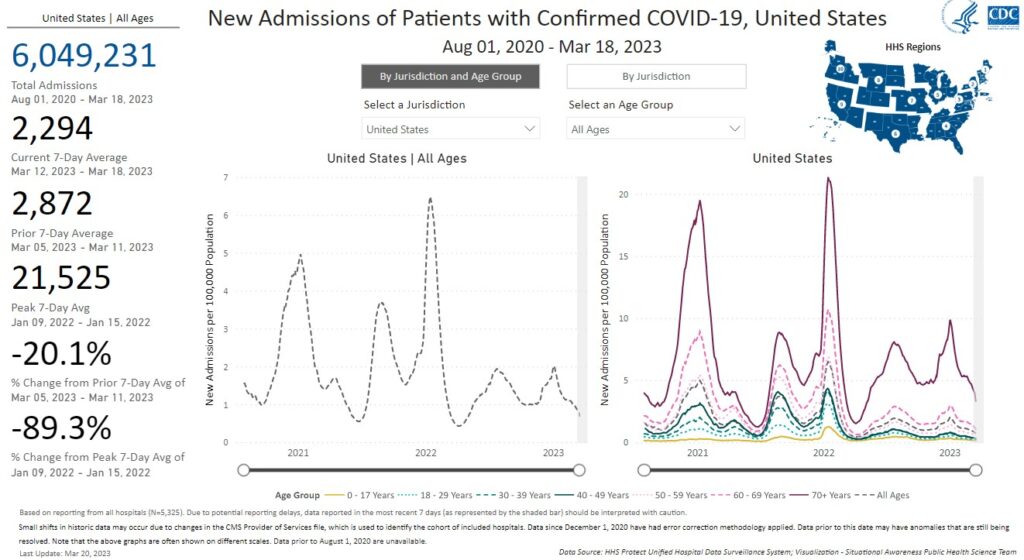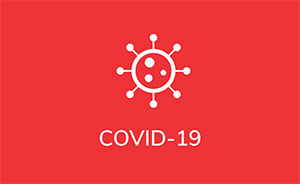CLL Society is going to lessen the number of COVID-19 Updates to monthly at this time, as all trends in numbers right now seem to be on the downward slope. If (and most likely when) another surge in case numbers occur, we will reassess the need to provide more frequent updates again.
That being said, the pandemic is in no way over and we will continue to keep our finger on the pulse of what is happening. For some perspective, even though the reported numbers are down, levels of SARS-CoV-2 in the wastewater are still more than three times higher than they were at this point last year. So, it is still of utmost importance to take precautions.
While the bivalent COVID-19 booster provided broadened immunity that was improved from the original booster shots, we know that immunity created from vaccine doses begin to wane around the four-month mark. The evidence to date suggests that COVID-19 vaccines offer strong protection against severe disease, hospitalization, and death. But their capacity to stave off infection is short-lived. What this means practically is that anyone who received their bivalent booster in the fall now has sub-optimal protection against infection.
The FDA has been very vague when multiple news agencies have asked what the plan will be regarding additional booster doses. They were however quoted last week in many news articles as saying, “We continue to closely monitor the emerging data in the US and globally, and we will base any decision on additional updated boosters upon those data.”
Meanwhile, other countries (such as the United Kingdom and Canada) have already recommended a second bivalent spring dose, particularly for those who are in high-risk groups and above a certain age. So right now, in the US, we are unfortunately in a holding pattern until we hear more from the CDC and FDA. If you have concerns about your COVID-19 booster vaccination status, CLL Society encourages you to speak with your healthcare provider about your options.
We realize we may sound like a broken record at this point, but that doesn’t mean the information has lost its importance for our community. It is more important now than ever to wear a high-quality mask, perform a personalized risk-assessment to determine what social activities you are comfortable engaging in, test often and early (preferably with a PCR test) should you have any cold or flu-like symptoms, and call your healthcare provider to seek a prescription for COVID-19 antiviral medications asap if you test positive.
CLL Society updated the COVID-19 Action Plan at the beginning of March to reflect all of the changes that have been taking place lately, and removed sections that are no longer pertinent. Please revisit and make sure your plan is up-to-date!
COVID-19 Statistics
Here is this week’s CDC map of community level of spread (this particular link is weighted based on hospitalizations and not based upon the actual level of community spread). And here is the link to the New York Times actual cases per capita map as pictured below. The New York Times data was last updated March 20th. As you can see there are still several hot spots around the country.

Here is the summary graphic from the New York Times as of March 20th. We continue to see a significant downward trend in all 14-day change metrics.

Here is a graphic from what we consider to be the most accurate reflection of the numbers, the Wastewater Monitoring Project, last updated on March 20th. This graphic also reflects a significant decrease in the amount of SARS-CoV-2 virus being detected in wastewater. If you go to the website and hover over the graph, this is where you can see at this time last year, there were an average of 118 copies of the virus found. This week there were 388 copies found. This helps paint a bigger picture. While cases are dropping, the levels of virus being detected in our wastewater is more than three times that of what it was at this same time last year. Levels remain the highest right now in the Midwest region.

Hospitalizations due to COVID-19 according to the CDC are also dramatically down by 20% from the previous 7-day average as of March 18th. As we have seen all winter, there continues to be a disproportionately high number of hospitalizations for those over the age of 70 (purple solid line on the right) compared to all of those in younger age groups.

Current & Emerging Variants of Concern (VOC)
As of March 18th, per the CDC Variant Tracker XBB.1.5 continues to dominate in the US, making up more than 90% of all cases. There are two new cousins of XBB.1.5 that scientists are monitoring in the periphery right now. They are XBB.1.9.1 and XBB.1.16. The main thing to keep in mind with these new variants, is that each and every successive one will need to be slightly more infectious than the previous one in order to show a growth advantage over XBB.1.5. Only time will tell.

COVID-19 in the News
- An FDA panel recommendation was made for the agency to grant full FDA approval status to Paxlovid for the treatment of COVID-19.
- The World Health Organization (WHO) announced that new COVID-19 variants will get names now instead of Greek letters or numbers. The new naming convention will not replace those that have been previously named. Thank goodness for no new variants described by the alphabet soup and algebra-like equations!
- A new study suggests long-COVID is being seen in a large number of cancer patients after infection. Long-COVID has recently been renamed PASC, which stands for “Post-acute Sequelae of COVID-19.” Researchers found that 60% of cancer patients reported having long-COVID (PASC) symptoms for an average of seven months after diagnosis of infection. More women reported symptoms than men (63% vs 37%). Symptoms reported included fatigue, sleep disturbances, persistent body aches, stomach/intestinal symptoms, headaches, altered taste/smell, shortness of breath, and cough.
Keep learning, and please stay well.
Robyn Brumble, MSN, RN
Director of Scientific Affairs & Research
CLL Society

















